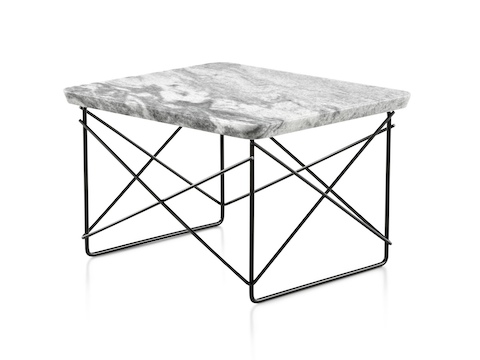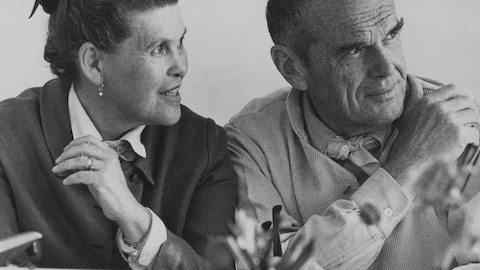The result of continuous experimentation
At the end of World War II, Charles and Ray Eames turned to rapidly emerging technologies with the aim of adapting these new industrial processes to the creation of furnishings. They experimented relentlessly with everything from bent plywood to stamped metal, to fibreglass-reinforced plastic and welded wire. The latter inspired a series of chairs, chair bases, an experimental sofa and a table base that could be adapted for both large and small surfaces. The Eameses even developed a mass-production technique for simultaneously welding wire rods that Herman Miller adopted to fabricate these designs. The Eames Wire Base Low Table is a result of that experimentation, and has been in continuous production at Herman Miller since 1950.

The Eameses found hundreds of uses for these small tables, but none more renowned than the hosting of a Japanese tea ceremony, or chanoyu, in their newly erected Case Study House in honour of a visit by Charlie Chaplin and Isamu Noguchi. Re-engineered to weather the elements, today this practical little design is more useful than ever.
